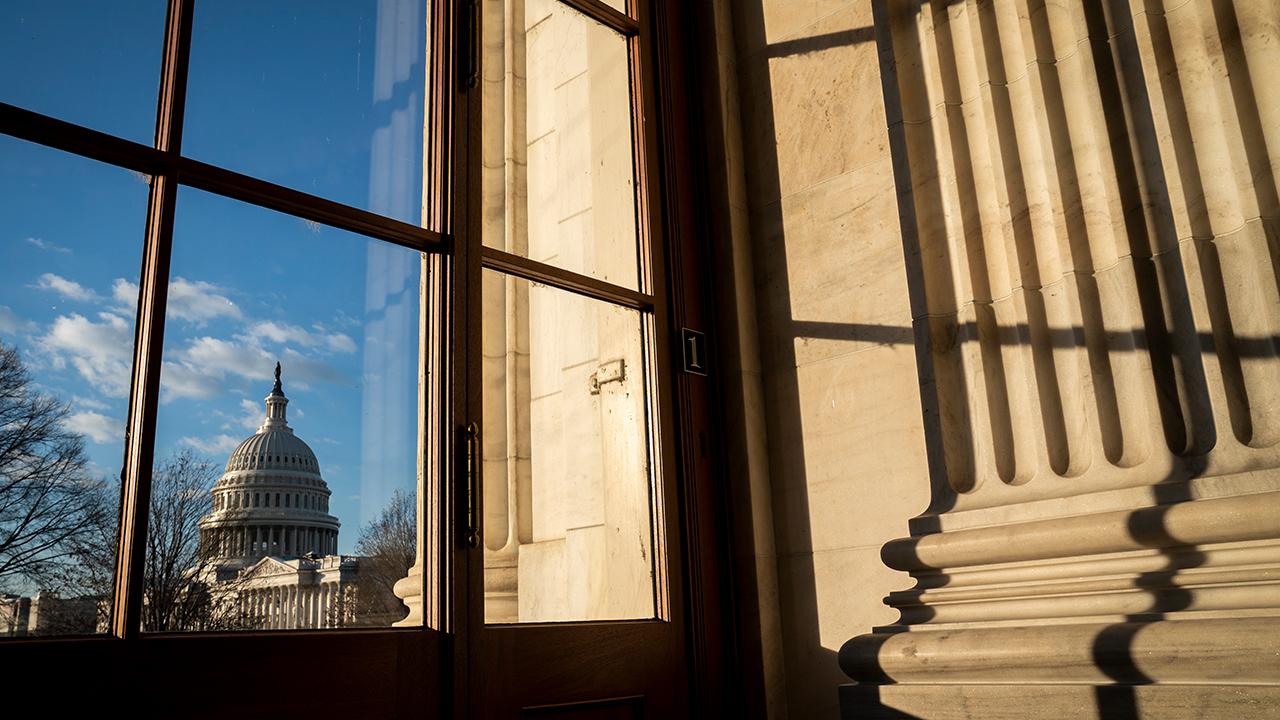Congress has funneled trillions to coronavirus relief efforts. Where is that money going?
On Tuesday, House Democrats unveiled a fifth stimulus package calling for more than $3T in spending
Get all the latest news on coronavirus and more delivered daily to your inbox. Sign up here.
Over the course of two months, Congress has thrown close to $3 trillion at stanching the economic blood-flow of the coronavirus pandemic — but with the job losses mounting, and the country mired in the worst downturn since the Great Depression, some lawmakers contend it’s not enough.
Even with the unprecedented injection of aid, the jobless rate in April hit 14.7 percent, the highest on record since the Great Depression. In the seven weeks since the nation's economy came to a near standstill, more than 33 million Americans have filed for first-time unemployment benefits, meaning the jobless rate will likely continue to climb in May.
Economists have forecast a sharp contraction in GDP in the second quarter, including Federal Reserve Chairman Jerome Powell, who acknowledged that there may be an "unprecedented" drop in the second quarter.
CORONAVIRUS LAYOFFS HURTING LOW-INCOME WORKERS THE MOST, STUDY FINDS
On Tuesday, House Democrats unveiled a fifth stimulus package calling for more than $3 trillion in spending, with $1 trillion set aside for states and cities; so-called hazard pay for essential workers on the frontline of the virus outbreak; and another round of one-time $1,200 payments to individuals.
But Republicans are wary of another round of aid — the federal budget deficit could nearly quadruple this year, hitting $3.7 trillion, according to the Congressional Budget Office — with some suggesting they’d like to see how the existing $3 trillion trickles through the economy before shoveling more cash at the crisis.
"We just want to make sure that before we jump back in and spend another few trillion of taxpayers’ money that we do it carefully," Treasury Secretary Steven Mnuchin said during an interview on “Fox News Sunday.”
WHITE HOUSE MULLS $5K STIMULUS CHECK IN RETURN FOR CHANGE TO SOCIAL SECURITY
Here’s a guide to where the stimulus money already signed into law by President Trump is going:
First relief bill: $8 billion
At the beginning of March, Trump signed a bipartisan $8 billion deal to provide emergency funding to fight the outbreak of the virus. The bill included about $7.7 billion in discretionary spending to help vaccine development, research, equipment stockpiles and state and local health budgets.
Under the agreement, more than $2 billion would be allocated to the Centers for Disease Control and Prevention, and more than $3 billion would go toward a public health emergency fund and the National Institutes of Health Research. About $1.25 billion would be provided to help protect Americans living abroad.
Second relief bill: $192 billion
In mid-March, lawmakers passed a bill to provide free testing for COVID-19, as well as extend paid sick and family leave; strengthen unemployment insurance; and increase food aid to alleviate the financial burden on some American families.
FED'S KAPLAN WARNS OF 'HISTORIC' CONTRACTION, SEES NEED FOR MORE STIMULUS
At the time, the government did not specify how much the legislation — known as the Families First Coronavirus Response Act — would cost. However, the Congressional Budget Office has estimated that it would add $192 billion to the federal deficit over the next decade.
The legislation created temporary coronavirus-related sick leave benefits paid by employers with fewer than 500 workers. Workers with the virus would receive their full wages if they were self-quarantining, or two-thirds of their pay when caring for a sick family member. It also provided $1.3 billion in emergency food funding.

Third relief bill (CARES Act): $2.2 trillion
The biggest relief package ever passed in the U.S., the CARES Act shoveled cash toward all parts of the U.S. economy to counter the paralysis on activity, a result of stay-at-home measures adopted to mitigate the spread of the virus.
VIRUS OUTBREAK COULD FORCE HALF OF SMALL BUSINESSES TO CLOSE WITHIN 6 MONTHS
Most notably, the bill expanded unemployment benefits by $600 per week through July 31; sent a one-time payment of up to $1,200 for Americans earning less than $99,000; and established the Paycheck Protection Program.
Here’s a rough breakdown of the funding in the more than $2 trillion bill:
- Expanding unemployment benefits and broadening which Americans are eligible to receive the cash: $268 billion
- Economic impact payments (cash checks for Americans): $293 billion
- Provides small business loans and grants, including setting up the Paycheck Protection Program, which offered forgivable loans of up to $10 million for businesses with fewer than 500 workers: $377 billion
- Support loans and loan guarantees for large businesses: $510 billion
- Assistance for state and local governments: $150 billion
- Increase health-related spending, including money for hospitals: $153 billion
- Support the safety net, such as increasing food stamps and funding for child nutrition programs: $42 billion
- Disaster assistance (expanding FEMA disaster assistance fund): $45 billion
- Increase education spending: $40 billion
- Support transportation providers and industries: $71 billion
- Reduce individual taxes, including loosening the cap on deductibility of charitable giving; providing temporary deduction for up to $300 of charitable donations; allow up to $100,000 to be withdrawn from retirement accounts penalty-free: $20 billion
- Cut business taxes: $241 billion
Fourth relief bill: $484 billion
The most recent bill signed by Trump in April to blunt the economic pain from the virus included $310 billion to replenish the Paycheck Protection Program (which exhausted its initial $349 billion in funding within 13 days); $60 billion for the Small Business Administration disaster assistance loans and grants; $75 billion for hospitals struggling to cover costs; and $25 billion to ramp up testing efforts.
GET FOX BUSINESS ON THE GO BY CLICKING HERE




















